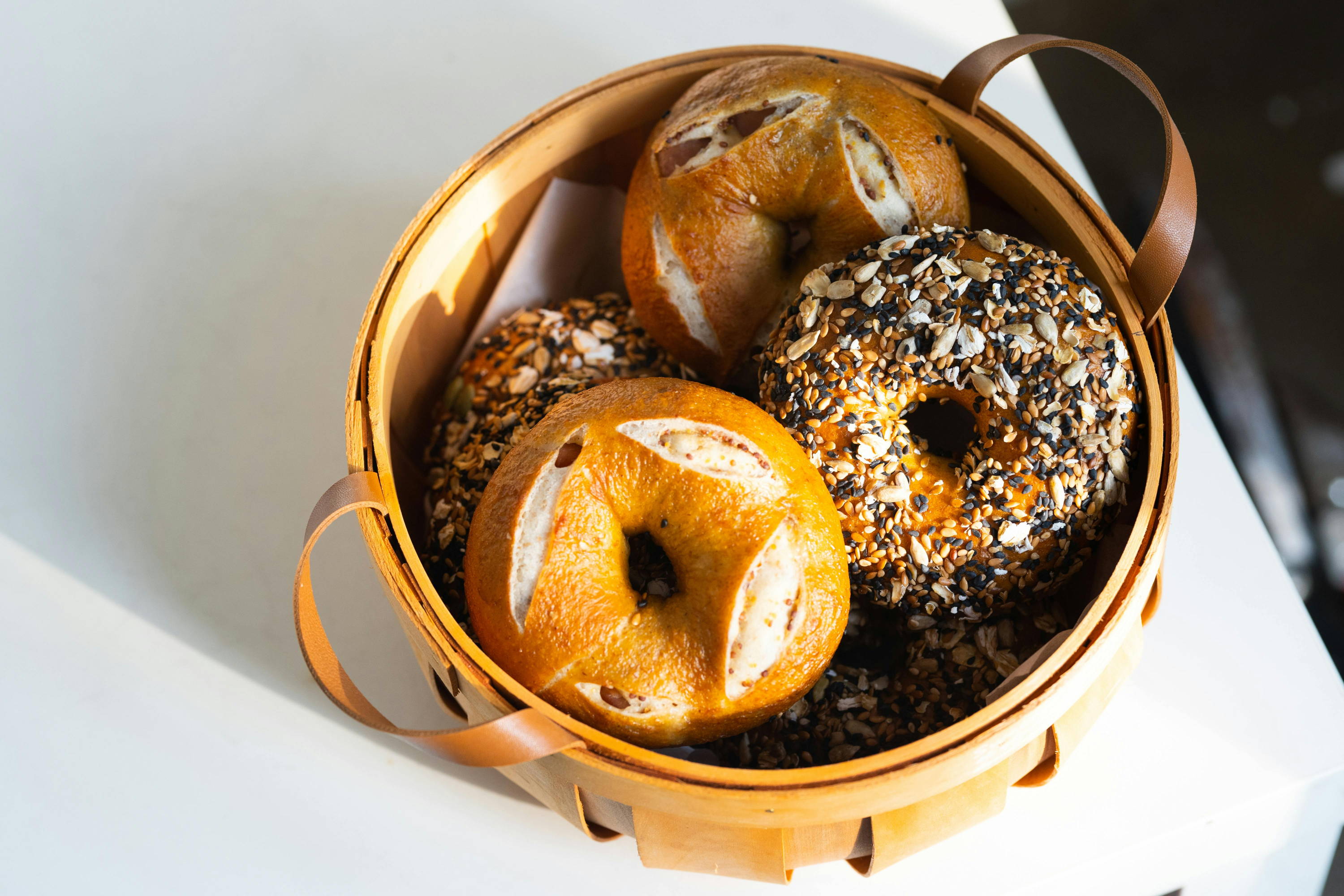There’s something deeply satisfying about biting into a thick bagel that’s crusty on the outside and soft and chewy on the inside. It’s extremely filling and the perfect brunch, lunch, or breakfast on a day when you know you need something extra filling. But where did the bagel originate? Well, that’s been debated, but in recent years the mystery seems to have abated and the truth has come out. Are you ready for it?
Ready or not, here it comes.
The bagel—now usually thought of as something you eat in New York or Montreal–has its roots in…Poland and, possibly, Syria.
One theory that’s often been hoisted around is that the bagel came from Vienna. There was a siege on the city which was broken in the 1683 Battle of Vienna. The Polish king John III Sobieski played part in this battle, and helped repel invading Turkish armies.
Apparently, said king loved horses and a Viennese baker took it upon himself to thank the king by shaping his bread into a circle that represented a stirrup. As a stirrup in German is called "beugel" it’s only natural to assume this was the name of the bread.
The issue?
Bagels were first mentioned in writing in 1610 (the battle was only in 1683, remember?!). And by first mentioned, I mean a bagel that was called a bagel (bajgiel in Yiddish) and not something that looked like a bagel, but was called something else. The bagel was mentioned in the community regulations for the city of Krakow, where it was stated that women received a bagel, or bagels, after childbirth. The bagel also became part of other Jewish traditions and rituals over the years.
According to Wikipedia, and yes, we know, never quote Wikipedia, “[The bagel's] name derives from the Yiddish word beygal from the German dialect word beugel, meaning 'ring' or 'bracelet'.”
That doesn’t mean that some baker in Vienna didn’t want to make the Polish king happy by baking a bread in the shape of a stirrup, it just means that someone else invented the bagel.
So, let’s backtrack a bit and try to figure out where the bagel
actually came from (because when it was mentioned in 1610 chances are it'd been around for a while).
Back in the day (the day being in the 1200s), anti-semitic laws governed the parts of Eastern Europe that today include Poland. One law forbade Jews to touch flour and bake bread. This might seem weird, but the church reasoned that bread symbolized the body of Christ and, therefore, no one but Christians should bake it. However, in Poland they were more forward thinking than in other places and decided to give all the citizens of the country, including the Jews, the right to touch flour and bake with it.
The Christian bishops paled at this outrageous liberty, telling their flocks that bread made by Jews could be poisoned (as, surely, they wanted to kill off the Christians…so reasoned the bishops).
Rumor then has it that the Jews had a genius idea—they decided to boil the bread before baking it and say that it somehow made it acceptable to Christians (though surely even boiled bread can contain poison?!). Or perhaps it was an enterprising Christian who came up with a way of bypassing the wrath of the bishops so that he or she could keep eating Jewish bread or help their Jewish friends? We shall never know. Nor shall we know if there’s any truth to the idea that boiled bread made by Jews was more acceptable to Christians. It could simply be that the Christians ignored the bishops.
What we do know is that the obwarzanek, a larger version of the bagel, was mentioned in Polish royal documents in 1394.
One theory, mentioned in Maria Balinska's book “
The Bagel: The Surprising History of a Modest Bread” suggests that the obwarzanek was an altered form of the German pretzel, which German immigrants probably brought with them to Poland. And apparently there were many immigrants as the Polish needed people to fuel the economy at the time.
But the first mention of a ring of dough that’s boiled and baked doesn’t come from Poland, but from Syria. The mention was made in a cookbook from the 1200s. It was
translated by Charles Perry in 2017.
Did the bagel come from Syria and make its way to Poland or was it the pretzel transformed into a bagel, or did someone in Poland create the first bagel (or rather the precursor, the obwarzanek)…perhaps by accidentally dropping the dough into a pot of boiling water and instead of throwing it out, throwing it into the oven instead?
No one knows.
At any rate, the obwarzanek gained popularity when Queen Jadwiga decided to refrain from cakes during Lent and instead eat obwarzaneks.
Perhaps because white wheat flour at the time was expensive and most people couldn’t afford to indulge in obwarzaneks, the Jewish bakers made a smaller version for everyday consumption. This is what is today known as the bagel.
